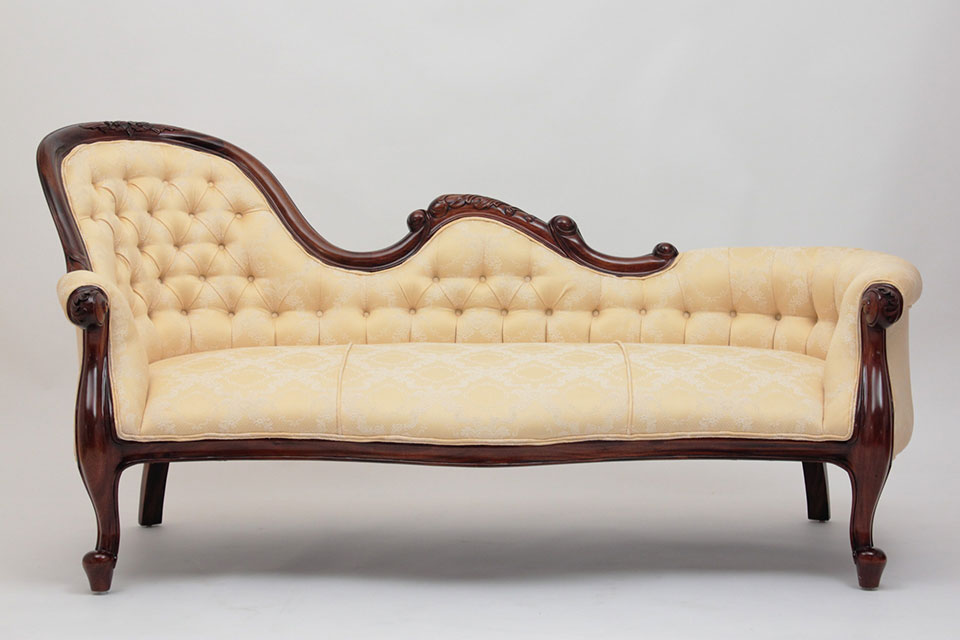- Home
- Learn About Antique Furniture and Reproductions
- Resources
- How to Identify Victorian Furniture
How to Identify Victorian Furniture

There is nothing new about nostalgia. In fact, Victorian furniture has been perennially popular with collectors and decorators alike for many years. Victorian pieces are much more prevalent today than other furniture styles but knowing how to identify Victorian furniture can mean the difference between having a valuable heirloom or a good reproduction. Fortunately, Laurel Crown has more than 25 years of experience in producing high-quality antique reproductions, and the Victorian style is one of the most highly coveted designs in our collection. Whether you are interested in collecting Victorian furniture or you are merely curious about the style, we can help you understand the tell-tale characteristics.
What is Victorian Furniture?
Queen Victoria assumed the rule of England in 1837 and reigned until her death in 1901. This period became known as the Victorian era, which was a time defined by rapid change and development. A growing middle class created a huge demand for goods and services. Furnishings produced during this period were a fitting testament to the decorative preferences of the royal family and the English home was enthusiastically idealized. Keen to display their affluence, the new middle class gravitated toward old-world furniture. Carpenters combined the demand for bourgeois taste with domestic practicality to create a number of revivalist designs with foreign influences, including Egyptian, Greek, Rococo, Oriental, and more. Every period of Victorian furniture began to take on its own distinct set of characteristics.
- Gothic Revival (1830 – 1860): Departing from the classical influences of ancient Greece and Rome, English furniture makers began incorporating elements from medieval architecture and design. These pieces had a commanding presence and favored decorative patterns, such as scalloping, rosettes, pointed arches, and turrets.
- Rococo Revival (1840 – 1865): Furniture of this time was characterized by its elegance, grace, and lightness. Ornamentation usually consisted of delicate foliage and intricate details, such as cherubs, flowers, fruits, shells, and scroll motifs. Carvings were also executed in much higher relief and many pieces began to be upholstered.
- Renaissance Revival (1860 – 1890): Borrowing elements from an array of preceding style periods, Renaissance Revival furniture was gargantuan and highly ornamental. Furniture pieces features heavily carved finials, turned or fluted legs, burled panels, inset marble tops, and cookie-cut corners.
- Eastlake (1870 – 1890): In response to over-the-top Rococo and Renaissance Revival furniture, Charles Lock Eastlake called for a careful approach to handcrafting simple and sturdy furniture. He expounded upon his design ideas in Hints on a Household Taste, which was published in 1868. Although his signature pieces were not devoid of ornamentation, they were more geometric in shape and modestly curved.
- Arts and Crafts (1880 – 1914): Despite the fact that Eastlake advocated for a lighter form of decorative arts, his pieces were still cheaply mass-produced by machines. In reaction to Eastlake designs, aesthetics and social reform were successfully wedded under the helm of the Arts and Crafts Movement. Pieces of this period had simple shapes, strong lines, and limited ornamentation. Light wood was considered the single most important element.
How to Identify Victorian Furniture
Despite the fact that you are unlikely to find a genuine antique made by John Henry Belter or Mitchell and Rammelsberg at a local estate sale, there are several characteristics and features to look for when investing in Victorian-style furniture.
Decorative Details: Spiral legs, also known as spiral-twist or barley-twist legs, were used in many Victorian furniture pieces. Turnip feet, Chairs made at this time features balloon backs, deep seats, and low arms to accommodate the voluminous dresses that ladies wore. Once the coiled spring was patented, chair legs became shorter and seats became deeper in order to accommodate the springs beneath. As a result, upholstery had to be strong enough to withstand spring abuse. Common upholstery materials included heavy brocades, damasks, velvets, and needlepoint.
Proportions: As the smooth and relatively simple Grecian style of the Regency period declined in popularity, furniture was replaced by more imposing and impressive pieces. This extravagant and flamboyant furniture style reflected the Victorian sentiment that "more is more." Victorian furnishings also featured graceful, sinewy lines, carefully carved details, and other romantic influences that complemented their stately proportions.
Woods Used: Species such as mahogany, oak, and rosewood were the cornerstone of many fine furnishings made during the Victorian era. At the height of Gothic Revivalism, some carpenters employed walnut for designs of lesser quality. Eastwood strayed from the pack by coating cherry, oak, rosewood, and walnut with dark varnishes, which can sometimes make it difficult to determine what type of wood was used to make late-Victorian furniture. Many tabletops and sideboards are also topped with marble.
Although many Victorian furnituremakers pillaged the past for inspiration, many of the architectural and design achievements of the 1800s live on to this day. Not every piece of Victorian furniture can be dated or even definitively identified but knowing how to identify Victorian furniture will certainly give you a leg up on the competition.
We proudly offer a wide selection of Victorian antique reproductions that are all carved, sanded, and finished by hand with the utmost care and attention down to the minutest detail. If you have any questions about identifying period furniture styles or our Victorian furniture collection, please don't hesitate to contact us for additional information.









